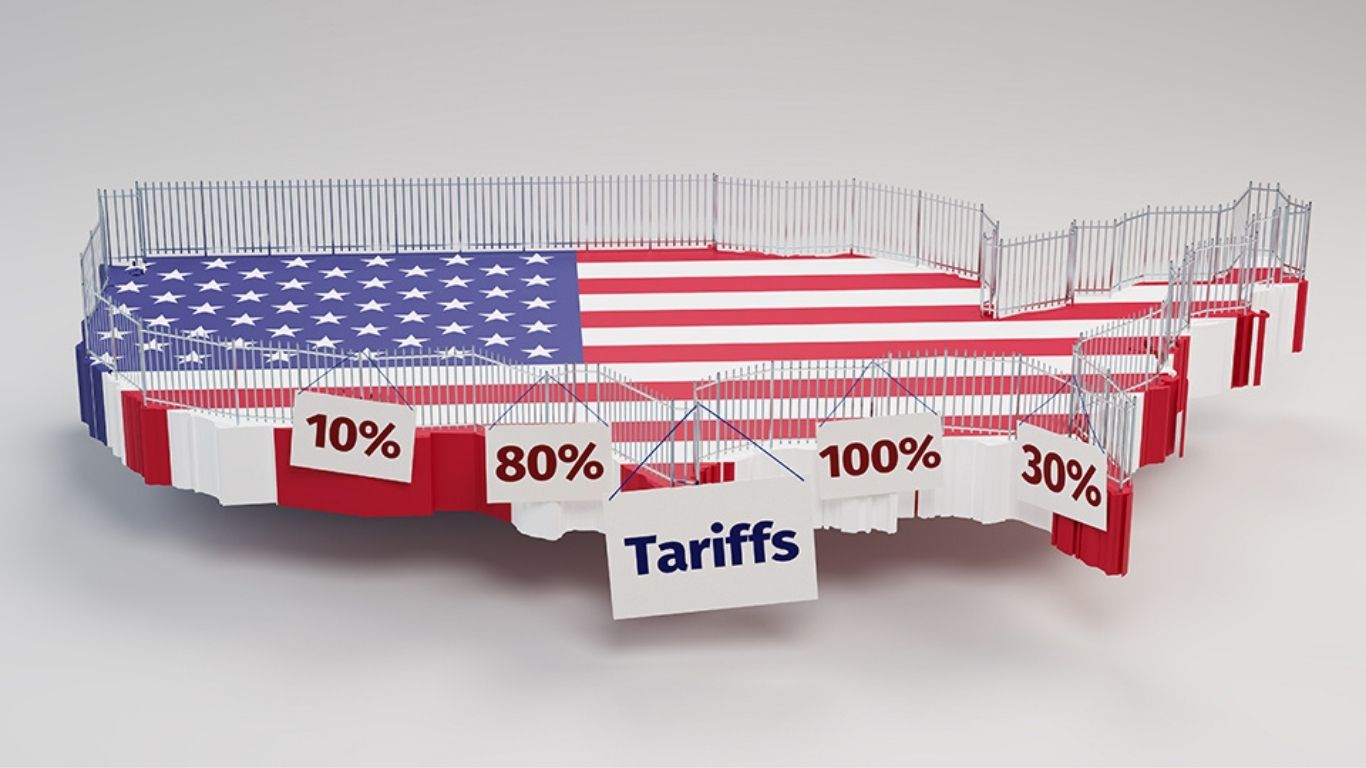President Trump declares a bold “Liberation Day” with sweeping new tariffs, triggering global trade tensions, economic uncertainty, and what experts call the biggest tax hike in modern U.S. history. Discover how this aggressive protectionist shift could reshape manufacturing, consumer prices, and global alliances.
Historic Protectionist Turn: A Landmark in U.S. Trade Policy
In a bold assertion of economic nationalism, President Donald Trump has launched the most sweeping round of tariffs in American history, branding the moment “Liberation Day.” Speaking from the White House Rose Garden, Trump unveiled a baseline 10 percent tariff on all imports, with some reciprocal tariffs soaring as high as 46 percent for certain countries like Vietnam.
These new tariffs, set to take effect beginning April 5, are being implemented under the rarely-used International Emergency Economic Powers Act, a 1977 law designed for national security threats. Trump now frames the U.S. trade deficit as a full-scale “national emergency.”
Economic Impact: Up to $800 Billion in New Tax Burdens
According to White House estimates, the tariffs will add between $400 billion to $800 billion annually in additional tax costs for U.S. consumers and businesses. Experts warn this could be the largest tax increase in modern American history, potentially reversing economic gains made in the post-COVID recovery era.
Stock markets responded sharply. Futures for the Nasdaq dropped over 2 percent immediately after the announcement. Economic forecasts have dimmed, with leading investment banks placing U.S. recession risks between 35 to 40 percent in the next 12 months.
Global Backlash Brewing: Multilateral Retaliation Ahead
While Trump described the move as restoring fairness to a “rigged” system, global leaders have pledged swift retaliatory action. European Commission President Ursula von der Leyen issued a stark warning, signaling multilateral retaliation from the European Union. “All instruments are on the table,” she said, emphasizing that Europe is prepared for a trade confrontation if necessary.
These measures not only threaten global trade harmony but also test the strength of longstanding alliances. Countries targeted by Trump’s tariffs, including Japan, South Korea, the EU, and Canada, are traditional U.S. security partners now being hit with economically punitive measures.
Strategic Reshoring or Risky Gamble?
Trump claims these tariffs will reshore manufacturing, boost domestic production, and bring back “millions of jobs.” However, experts caution that industrial policy is not easily rebooted. Building new manufacturing facilities requires years of investment, regulatory approval, and skilled labor much of which is currently lacking or prohibitively expensive in the U.S.
Critics argue this is unilateralism in trade, bypassing multilateral frameworks like the World Trade Organization (WTO) and inviting legal and diplomatic backlash. Meanwhile, tariffs may serve more as negotiating leverage than long-term policy, casting uncertainty over supply chain decisions.
What’s Being Taxed: From Steel to Smartphones
The scope of the tariffs is massive. Goods impacted include:
Electronics and semiconductors
Apparel and footwear (affecting over $100 billion in imports annually)
Pharmaceutical ingredients
Vehicles and auto parts
Agricultural chemicals and fertilizers
Tariffs also hit nations differently: 34 percent on China, 20 percent on the EU, 26 percent on India, and 36 percent on Thailand. Trump said these rates are based on the idea of “reciprocity,” halving the rates other countries allegedly impose on U.S. exports.
Farmers, Consumers, and Small Businesses Bear the Brunt
For American farmers, the timing is especially painful. As planting season begins, fertilizer costs are set to spike, while critical export markets like China could close their doors in tit-for-tat retaliation. Clothing and food prices are expected to rise, disproportionately affecting lower-income Americans.
According to Rob Larew, president of the National Farmers Union, “Trade tensions will raise costs, disrupt supply chains, and restrict markets causing farmers, consumers, and businesses alike to suffer.”
Inflation, Unemployment, and Economic Volatility
Economists predict that inflation will surge in the short term as companies pass on higher import costs to consumers. Industries such as retail, automotive, and technology may struggle to absorb rising input costs. Some forecasts suggest unemployment could double, especially if export-dependent industries begin shedding jobs.
Market volatility has surged to levels not seen since the early COVID-19 pandemic. Trump postponed his announcement until after U.S. markets closed, but Asian markets opened within hours, reacting negatively.
Secondary Tariffs and Energy Diplomacy
Adding to the tension, Trump has floated the concept of secondary tariffs penalties on countries that do business with U.S. adversaries like Iran, Venezuela, or Russia. New Senate legislation proposes 500 percent tariffs on any country importing Russian oil or gas. That would directly target EU nations heavily reliant on Russian energy, raising concerns over extraterritorial economic enforcement.
The Future of American Trade in a Multipolar World
Trump’s new trade strategy is a radical departure from the decades-long U.S. commitment to free trade and multilateralism. Whether this hardline turn restores American economic strength or provokes a deeper global recession remains uncertain.
What is clear is that Trump’s ‘Liberation Day’ is not just a symbolic declaration it is a seismic policy shift with global consequences. Businesses, consumers, and governments alike must now brace for a new era of trade nationalism, rising protectionism, and unpredictable economic diplomacy.




